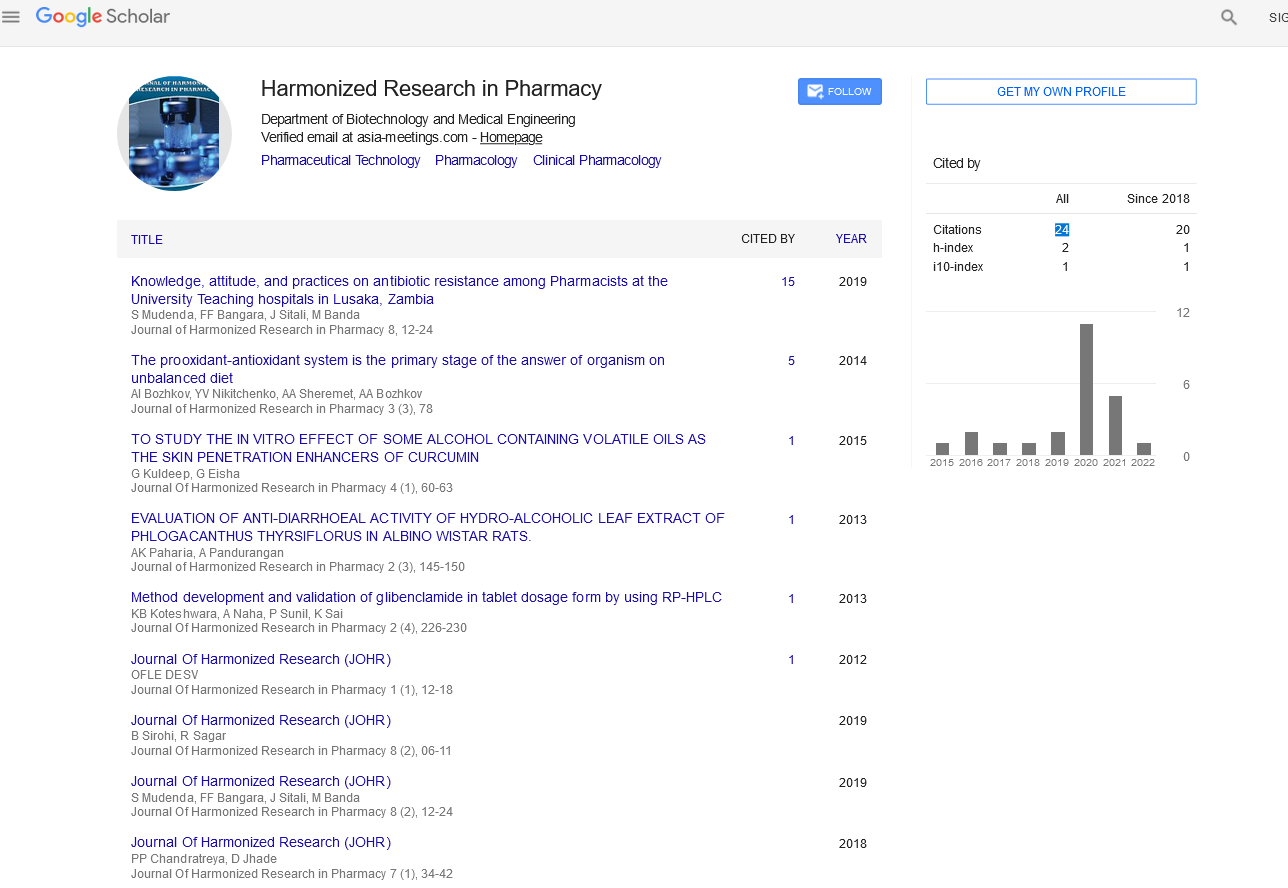Perspective - (2022) Volume 11, Issue 1
IMPROVING THE METHODS OF SOLUBILITY AND DRUG DESIGN IN A PRODRUG
Xinzhu Shan*Received: Mar 01, 2022, Manuscript No. JHRP-22-62448; Editor assigned: Mar 04, 2022, Pre QC No. JHRP-22-62448 (PQ); Reviewed: Mar 18, 2022, QC No. JHRP-22-62448; Revised: Mar 25, 2022, Manuscript No. JHRP-22-62448 (R); Published: Apr 04, 2022, DOI: 10.30876/2321-0958.22.11.178
Description
Prodrug design is a well-known molecular modification strategy aimed at optimizing the physicochemical and pharmacological properties of drugs, improving their solubility and pharmacokinetic properties, and reducing toxicity. Lack of solubility is one of the major obstacles in drug development. The purpose of this study is to explain recent advances in improving solubility with a prodrug approach. It provides examples of key chemical carriers and successful strategies, focusing on progress in this area over the last decade.
Prodrugs are inactive precursors of drugs that are intended to be bio converted (activated) after administration, with the main purpose of improving the pharmacokinetic properties of the parent drug. Prodrugs have been successful for a long time, one of the earliest prodrugs, sulfasalazine, reach the colon and are converted by bacteria to two active metabolites, sulfa pyridine and 5-aminosalicylic acid. A prodrug is a poorly active or inactive compound treatment for autoimmune diseases such as Crohn’s disease and ulcerative colitis. The prodrug approach has shown grid containing the parental drug that undergoes some in vivo biotransformation through chemical or enzymatic cleavage, enabling the delivery of the active molecule at efficacious levels. Prodrugs are conventionally classified in two major classes: carrier linked prodrugs and bio precursors. Carrier linked prodrugs can be classified as bipartite prodrugs, in which the carrier is linked directly to the parent drug, and tripartite prodrugs, in which a spacer links the carrier to the parent drug. Carriers are commonly attached by chemical groups such as ester, amide, carbamate, carbonate, ether, imine, phosphate, among others. Mutual prodrugs are a type of carrier linked prodrug in which two active compounds are linked each acting as the carrier to the other. These prodrugs are more effective due to synergistic effects. Another type of carrier-bound prodrug is a polymer prodrug. These prodrugs use a polymeric skeleton as a carrier. Polymeric prodrugs are commonly used to design prodrugs that are cleaved in intracellular and targeted drug delivery systems. This approach improves drug solubility, stability, drug release, and pharmacokinetics. In addition, it can promote drug accumulation at the site of action and improve safety. Bio precursors are carrier-free, inert compounds that are rapidly converted to active drugs after a metabolic reaction.
The characteristics of an ideal prodrug are
• Resistance to hydrolysis during absorption.
• Weak or inactive activity.
• Water solubility.
• Good permeability through cells.
• Chemical stability at different pH values.
• Kinetics that allow the release of the parent drug.
Among the chemical bonds used to connect the parent drug to the carrier, esters have been shown to be promising due to their ability to hydrolyze both in vivo and in vitro. Below are some examples of the use of esters in the design of prodrugs. The prodrug approach has been a successful tool for improving water solubility, as evidenced by several publications showing up to 400,000 fold increase in solubility compared to the parent drug described here. This approach avoids discarding promising active prototypes and drugs that have limited therapeutic uses due to their low solubility. Reasonable selection of appropriate pro units and binding types can determine the selectivity, toxicity, and ideal bioconversion profile of the prodrug.

Google Scholar citation report
Citations : 147
Journal of Harmonized Research in Pharmacy received 147 citations as per google scholar report









